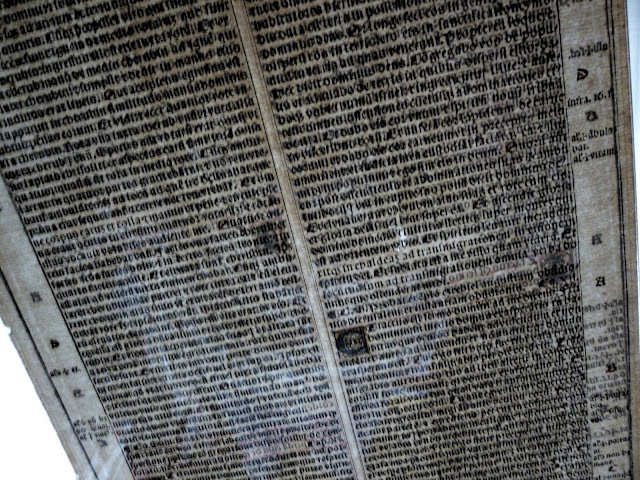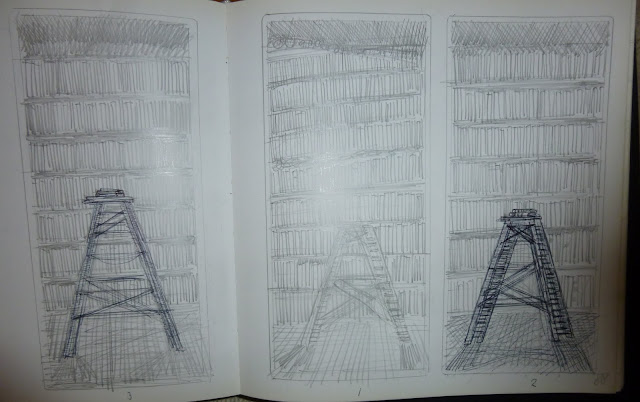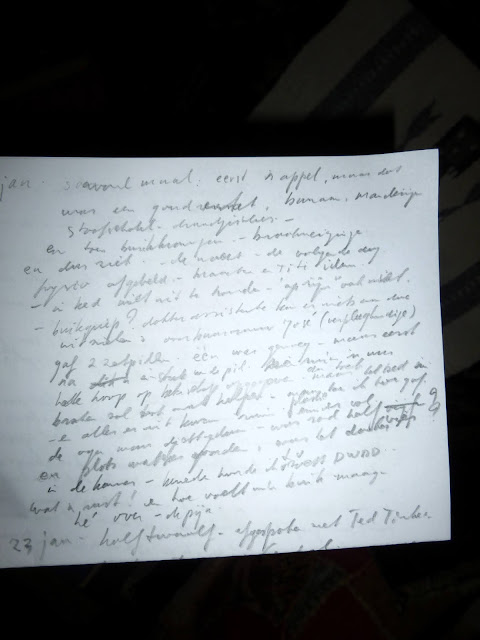Reliek lijst met Gotisch gesneden letters van de 12 Apostelen;
Reliek lijst met Gotisch gesneden letters van de 12 Apostelen, na een bezoek aan
de heilige graven in vermoedelijk de St Pieter te Rome in 1888. Ik neem aan dat
het drukletters zijn die uit ouder blokdrukken genomen zijn ingelegd in de
memento lijst. Het werk is hersteld met koperen schroeven en gietijzeren
beugels. Het was aangetast door houtworm maar is bestreden. Ik vond een ets
uit een kapotte bijbel van 1866 /De voetwasching, aan de achterzijde heb ik de
ets van dezelfde bijbel / Het laatste Avondmaal gevoegd. Deze devotionalia is
eigenlijk Meertens waardig. Ik ben blij dat ik een doel ervoer heb gevonden door
het hier met u te delen! Als het blokdrukletters zijn spreken we waarschijnlijk
over wiegedrukkunst letters.
Van Eyck, de 12 apostelen
Catharina van Sienna
Drukblok klassieke bijbel kapitalen of aanvangsletters bij rubrieken.
Begrippenlijst;
Kapitalen; Kostbare letters, vaker hoofdletters.
Devotionalia; Onder het begrip devotionalia verstaat men het geheel van (meestal kleine) religieuze gebruiksvoorwerpen zoals die in rooms-katholieke kring werden en worden gebruikt. Devotionalia zijn doorgaans geen religieuze kunst, maar worden gezien als uitingen van volksdevotie. Het zijn vaak massaprodukten die vooral volkenkundige waarde bezitten, hoewel er ook producten van religieuze volkskunst zijn die het niveau van massaproductie overstijgen. wiki
Meertens Instituut; Het Meertens Instituut onderzoekt en documenteert de Nederlandse taal en cultuur. Binnen het onderzoek worden verschillende onderzoeksgebieden onderscheiden: orale cultuur, religieuze cultuur, materiële cultuur, tradities en rituelen, syntactische variatie en fonologische variatie. Het wetenschappelijk onderzoek is tegenwoordig vooral contemporain georiënteerd: er wordt gezocht naar een verband met de hedendaagse samenleving en met actuele ontwikkelingen. Het Meertens Instituut heeft een uitgebreide collectie, bibliotheek, archieven en databanken, opgebouwd op het terrein van de Nederlandse etnologie en variatielinguïstiek.
Wiegedruk; of Incunabel
Ook: wiegendruk. Gedrukt boek uit de begintijd van de boekdrukkunst, vervaardigd voor 1501.































.JPG)
.JPG)
.JPG)
.JPG)
.JPG)
.JPG)
.JPG)
.JPG)
.JPG)
.JPG)
.JPG)
.JPG)
















































.JPG)
